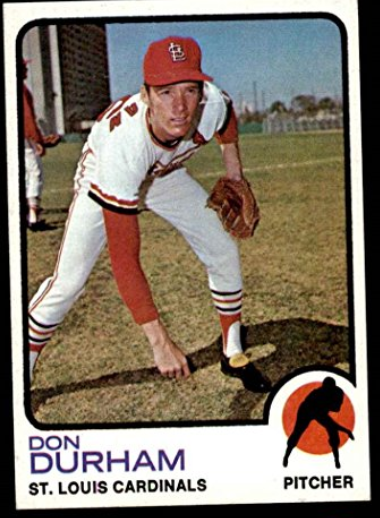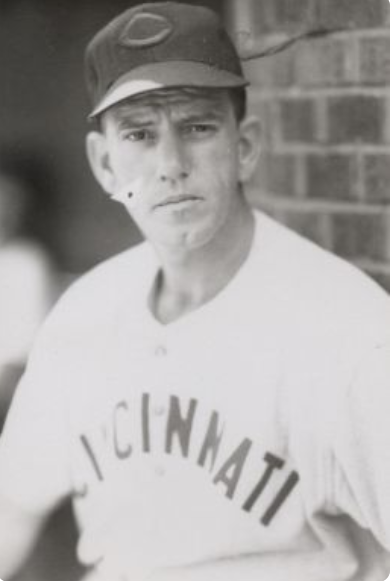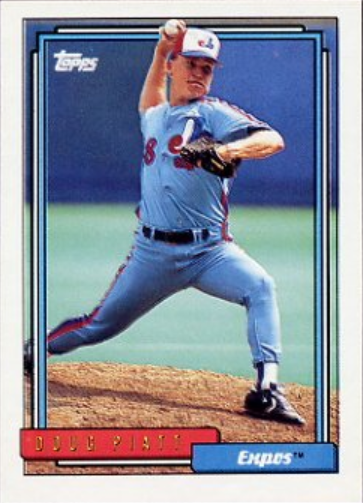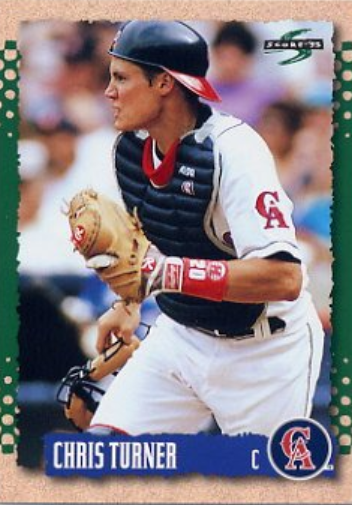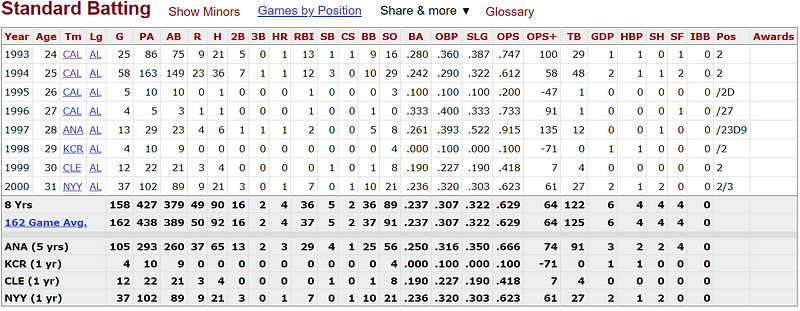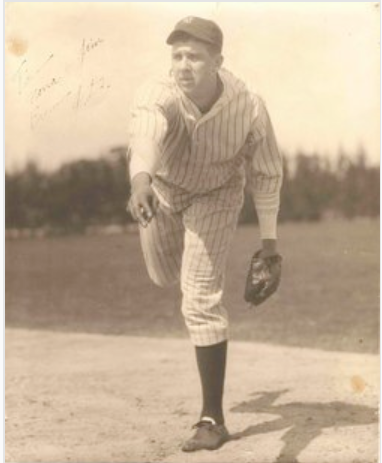WKU Baseball: The Best #ProTops In MLB History
Major League Baseball’s regular season set to start tomorrow, WKU will have no active major league ballplayers heading into the 2019…
Major League Baseball’s regular season is set to start tomorrow and WKU will have no active major league ballplayers heading into the 2019 season. While it’s been 13 seasons since Steve Stemle played his last game for the Kansas City Royals in 2006, WKU still has a good number of major leaguers over the years.
According to Baseball-Reference, Western Kentucky has produced 10 major leaguers in their history. While most have only had a cup of coffee, a few others did hang around for a few years.
Here are the best big leaguers in WKU’s history.
5.) Don Durham — Pitcher: 1972–73; St Louis Cardinals, Texas Rangers
Like most of the members on this list, Durham recently made the All-Century team for WKU baseball. Durham finished his WKU career in 1970 and quickly climbed the Cardinals minor league latter despite being a seventh round pick. He made his major league debut in 1972 at the ripe old age of 23 in July. He pitched 10 games for the Cardinals, posting a 2–7 record and a 4.34 ERA and actually did well with the bat, hitting .500 and belting two home runs in just 14 at-bats. Despite those encouraging numbers, St. Louis assigned him to AAA Tulsa in 1973. He stayed there until the Texas Rangers traded for him midway through the 1973 season. After being traded to Texas, Durham wouldn’t come close to his St Louis numbers; he pitched in 15 games for the Rangers, posting an 0–4 record and a 7.59 ERA on the 57-win Rangers.
Durham wouldn’t pitch again in the majors.
After a mediocre season 1974 season in AAA Spokane (7–4, 6.50 ERA) his baseball career was over. Durham’s batting prowess did give him a unique record across MLB: With that .500 batting average, he holds the record for most at-bats (14) from a player that has a .500 batting average.
4.) Hugh Poland — Catcher: 1943–48; New York Giants, Boston Braves, Philadelphia Phillies, Cincinnati Reds
Long before a dorm on WKU’s campus was named after him, Poland made a name for himself as the second major league player in WKU’s history. Poland was a light-hitting catcher that languished in the minors for eight years before making his major league debut at the age of 33 for the New York Giants. Poland took advantage of the thinned-out talent pool during World War II to carve out a niche as a backup catcher during the War. He played four games for the Giants before being traded to the Braves in the same season. He played in 44 games for the Braves in 1943, hitting just .191 with no home runs and 13 RBI’s (.455 OPS). That would be the height of Poland’s playing time in the majors but he did stick around and have small stints over the next few seasons, playing between three and 20 games. His career batting average sits at .185 across four franchises overall (Giants, Braves, Phillies, Reds).
Poland went on to manage in the minors for a few years after his playing days were finished and stayed in the game as a scout for the Giants until his death in 1984.
3. Doug Piatt — Pitcher: 1991; Montreal Expos
A junior college transfer that finished his WKU career in 1988, Piatt had arguably one of the better seasons for a former Topper in major league history. Despite being signed as an undrafted free agent by the Indians in 1988, Piatt was traded to the Expos in 1989 and worked his way through the minors and made his major league debut two years later on June 11, 1991 against the Cincinnati Reds. He pitched two innings of relief with no earned runs and struck out two Reds. He parlayed that successful debut to appear in 21 games as a reliever down the stretch for the Expos, tossing 34.2 innings with a 2.60 ERA and 1.71 K/BB ratio. Despite that success, Piatt never appeared in the majors again.
He didn’t make the team in 1992 and couldn’t sustain his success in the minors. He was traded to Kansas City a year later but his results continued to decline. He finished his minor league career playing his last three years in independent league baseball, finishing his last season in 1997 at the age of 31.
2. Chris Turner — Catcher: 1993–2000; California/Anaheim Angels, Kansas City Royals, Cleveland Indians, New York Yankees
The only former WKU player to receive a World Series ring, the Bowling Green native was a more successful version of Poland, sticking in the league as a backup catcher/utility player. Turner was a three-time All-Sun Belt player in the late 80's/early '90s and was drafted by the Angels in the seventh round of the 1991 draft. He made his major league debut in August of 1993, going 1-for-2 against the Brewers. He hit .280/.360/.387 in 86 at-bats for the Angels during his rookie season. That successful debut earned him the backup catcher role in the strike-shortened 1994 season. During that year, Turner played a career-high 58 games and slashed .242/.290/.322 that season.
After the strike, Turner only had cups of coffee over the next five seasons, appearing in only 38 games (never more than 13 in a season) across four different organizations. Turner did have one last hurrah when the Yankees signed him for the 2000 season. Playing in 37 games (the most since his sophomore season), Turner spelled Jorge Posada, hitting .236/.320/.303 adding one home run and seven RBI’s. Turner wouldn’t appear in the postseason for the Yankees as Posada played every inning come October, but he did earn a World Series ring as the Yankees won their third-straight title against the Mets.
Turner’s career ended shortly after that, as he didn’t make the Phillies out of spring training and retired immediately afterwards in 2001 at the age of 32.
Jim Weaver — Pitcher: 1928–39; Washington Senators, New York Yankees, St. Louis Browns, Chicago Cubs, Pittsburgh Pirates, Cincinnati Reds
WKU’s most successful player played his entire career before World War II. Jim Weaver was 6'7" and was nicknamed “Big Ick”. Not much is known about his days on the Hill but he made his major league debut for the Senators in 1928 at the age of 24. He bounced around during his career, playing for six different teams. His most successful years were from 1934-1938, as he appeared in over 30 games each season. After cups of coffee with the Senators and Yankees, he broke through in 1934, pitching for the Cubs. On the 86 win team he went 11–9 with a 3.91 ERA. That solid performance got him packaged in a trade with future Hall of Famer Babe Herman and sent him to the Pittsburgh Pirates, where he’d have his most successful years, from 1935–37 on teams that averaged 85 wins.
He saw action in 103 games (62 starts) for the Pirates over that span, finishing with a 36–21 record, 3.76 ERA and a 1.47 K/BB ratio. After the 1937 season, Weaver finished his career playing for the Browns and Reds. He made three appearances on the future pennant-winning 1939 Cincinnati Reds but his major league career was over by early May. He played the rest of his career for Louisville’s American Association squad, finishing up in 1940. According to Baseball Reference, Weaver’s career numbers would make him comparable to successful modern players such as Collin McHugh, Jair Jurrjens, Trevor Bauer & Rich Harden.
Honorable Mention: Adam Duvall — OF: 2014–18; San Francisco Giants, Cincinnati Reds, Atlanta Braves
We won’t count Adam Duvall as a ProTop because he only was briefly at WKU (2007) before transferring to junior college Chipola State College (FL) & Louisville but technically he is not only WKU’s most recent player in the majors but also arguably the most successful. Duvall has made an All-Star Game (2016) and has slashed .230/.291/.454 with 87 home runs and 277 RBI’s over five seasons mainly with the nearby Reds. It’s a shame he didn’t stay in Bowling Green because the last few years would have been fun to claim him as a Hilltopper.
WKU’s hopes of breaking their 13-year streak are better than most people realize. Andrew Edwards and Anderson Miller are both still regarded as fringe prospects in the Kansas City Royals organization. Edwards will probably start the season in AAA while Miller is starting in AA. With Kansas City’s rebuild in full swing, it isn’t outrageous to think both could have cups of coffee over the next season or two.





